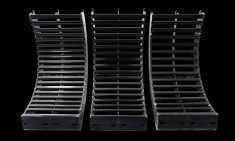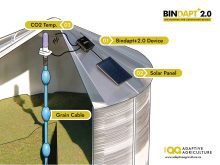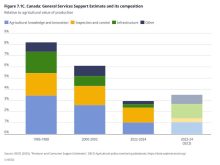Manitoba Agriculture says its new fertilizer efficiency tool will help farmers determine how much of a nutrient is doing its job and how much is wasted.
Speaking at Ag Days in Brandon, Manitoba Agriculture Minister Derek Johnson said the digital tool will help producers identify places where fertilizer efficiency could be improved and money could be saved.
Read Also

Local farm businesses, groups look forward to Manitoba Ag Days 2026
Most of agriculture is seemingly at Manitoba Ag Days each January: Manitoba agribusinesses and farm groups look forward to connecting with farmers at the 2026 show.
“You have to know where you are before you know where you’re going to, right? So this will help producers understand where they are,” he said.
Why it matters: Fertilizer efficiency and 4R nutrient management are being promoted in the grain sector, given targets to cut nitrogen fertilizer emissions.
A press release on the launch noted high fertilizer prices, last year’s grain market volatility and additional social pressure to reduce environmental impact.
Fertilizer is the catalyst for many sustainability discussions in the grain sector. In 2022, much attention was paid to the federal government’s 2030 goal to reduce nitrogen fertilizer emissions by 30 per cent compared to the start of the decade.
Farmers need to “integrate, recalibrate and optimize all these variables in order to maintain farm profitability,” Johnson said. “We created this calculator so that producers, agronomists and industry partners can quickly and easily assess the financial benefits to improving fertilizer management practices.”
The tool is based on Microsoft Excel software. Users can enter their farm’s soil test results, soil moisture zone, target crop, target yield, timing, application method, use of enhanced efficiency fertilizers, fertilizer rate and cost, among other values.
The tool will compare the farmer’s plan to both the most and least efficient fertilizer application cost and net profit per acre. Application recommendations are generated based on data provided by the farmer, along with tailored gauges of cost efficiency, greenhouse gas efficiency and maximum yield and profit.
Johnson linked the tool to the 4R philosophy – managing nutrients based on the right rate, source, placement and timing to optimize crop uptake and limit input cost. The philosophy has been pushed heavily by the province, as well as farm groups such as Keystone Agricultural Producers.
Karen Proud, CEO of Fertilizer Canada, called Manitoba “a longstanding champion of the 4R Nutrient Stewardship program as a key driver for increased production and reduced environmental impact.
“This calculator helps address barriers to adoption of the 4R program by helping farmers understand the value these practices can provide to their bottom line and the environment,” she said.
“It’s certainly worth exploring,” said outgoing KAP president Bill Campbell, noting that before the calculator, the best tool available to evaluate fertilizer efficiency was the bank balance.
His farm’s success at that was variable, he said, depending on crop, condition and whether manure was their source of nutrition.
“As we’ve seen those fertilizer prices double and triple, some of these mathematical equations could be extremely helpful as to how we deal with making the best use of our dollar,” Campbell said.
Fertilizer costs are among the major factors in farm risk. A survey of urea nitrogen prices in Manitoba, presented at Ag Days by the provincial ag department, showed farmers who bought last fall for spring 2023 paid close to $1,100 per tonne, more than double the price of the previous year.
Prices have recently softened, said farm management specialist Darren Bond, although projections are still at levels that would make farmers of several years ago blanch. In the five years previous to last year, all spring and fall-purchased urea prices had averaged less than $600 a tonne.
Rising grain prices eased some of the sting, but even so, Bond said one tonne of urea is now worth well over 60 bushels of canola and over 100 bushels of wheat. That eclipses the average per-acre yield for both crops.
Projections suggest that more than 110 bushels of wheat and nearly 70 bushels of canola will be needed to buy a tonne of urea in 2023-24. A tonne of phosphate is also expected to rise significantly over average per acre yield.
“We’re growing bigger crops now then we’ve grown before. Those big crops are hungry. They need the nutrients… There’s an increased focus on the environment. We need to be able to manage that,” Bond said.
“With all of these things going on and all these changes, we need to be able to find that profit level. The only way to do it is with numbers. With fertilizer being such a big cost, we need to be able to see the improvements of increasing our fertilizer efficiency and our beneficial fertilizer management practices.”
The calculator can be accessed for free at the Manitoba Agriculture website.















